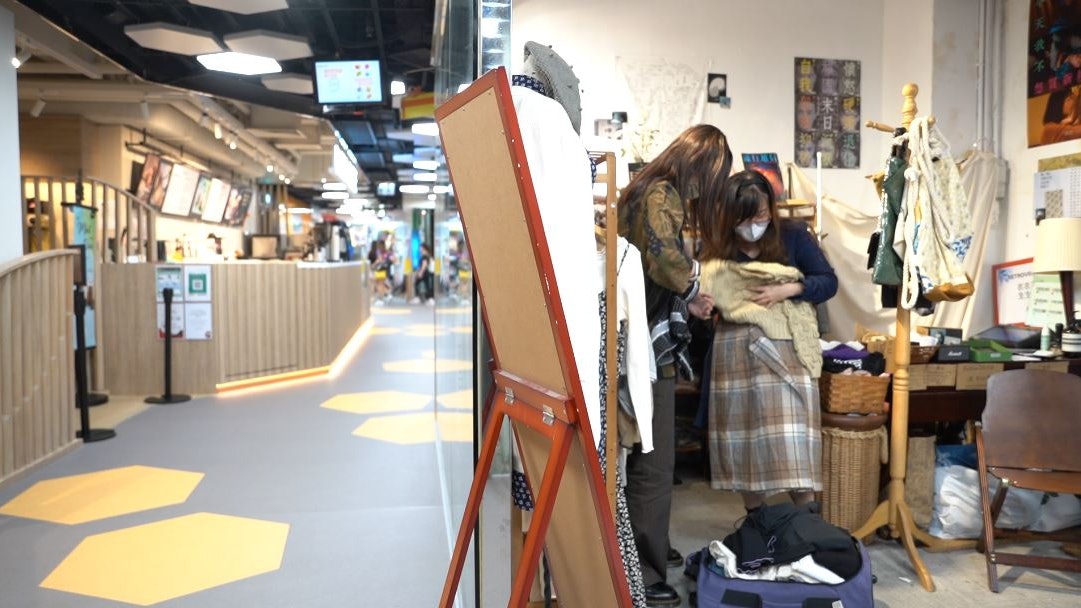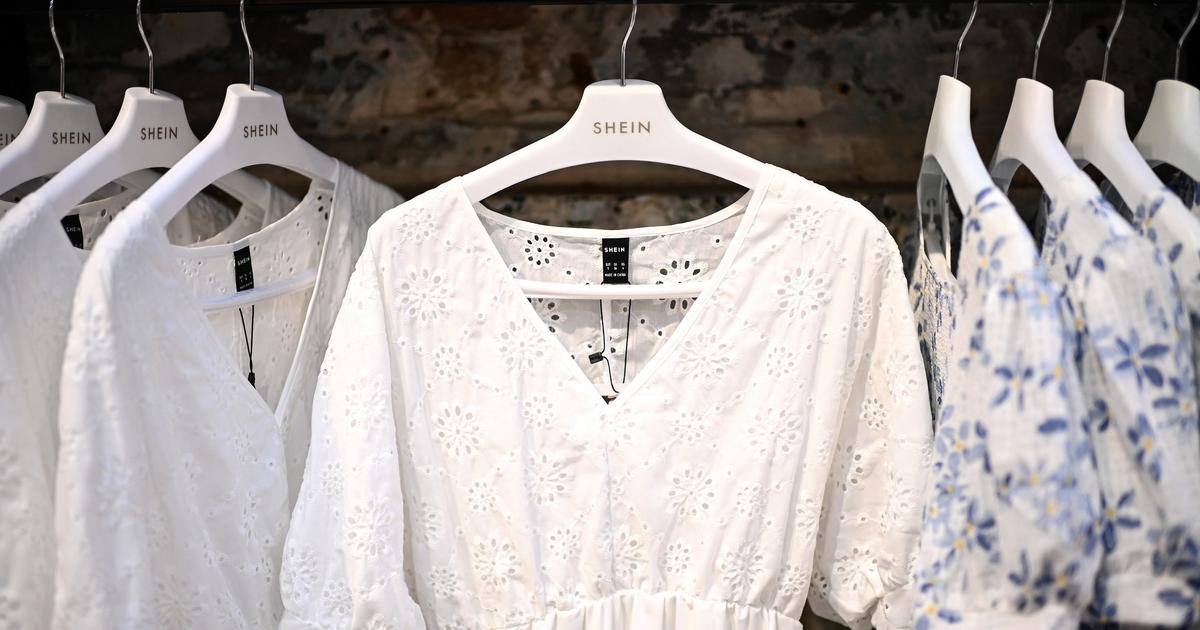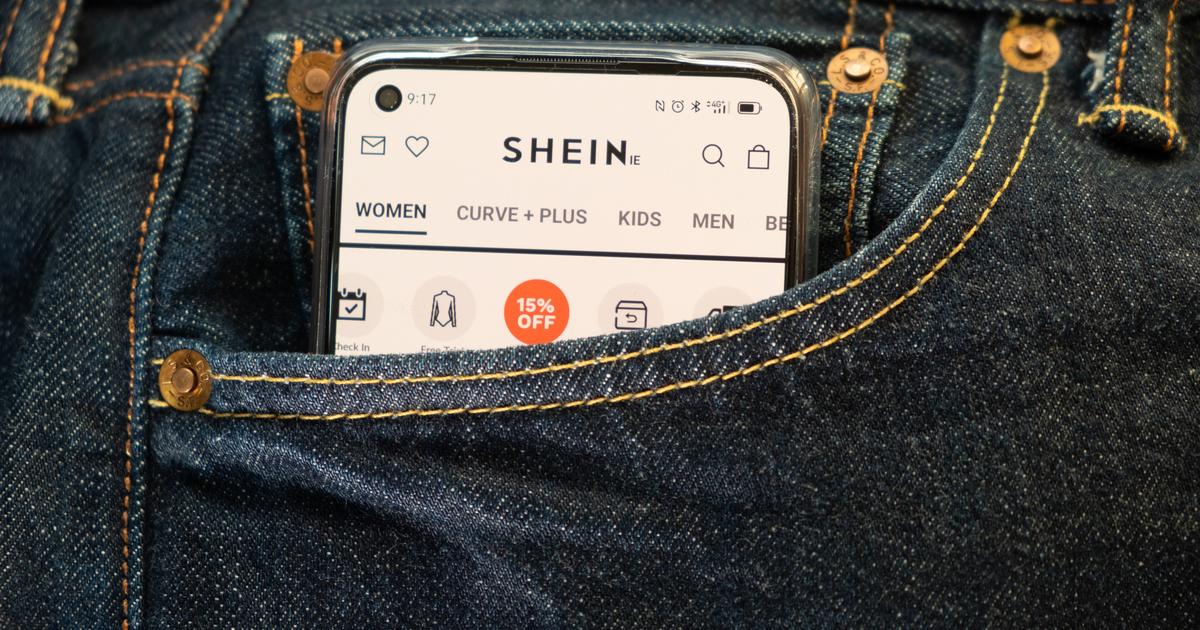Season shift!
A lot of old clothes sorted out in the closet will be sent for recycling to contribute to environmental protection.
However, in addition to throwing them into the "recycle bin," there are also second-hand sweater shops in the market, hoping to "upgrade" the value of second-hand sweaters back to the market, creating a sustainable cycle.
The founder of Retrovert, a small second-hand shirt shop in Mong Kok, has a bigger dream: "I want Fast fashion to disappear in this world." Huang Yarong and her partner Deng Pi personally do it every week. , Remodeling and packaging the old clothes delivered to them, and then putting them on the shelves for delivery to the customers, what we have experienced in the middle is more than just "a bit of effort."
The two are always very excited when it comes to putting together second-hand shirts.
(Photo by Wang Haitu)
Monthly collection of over 500 second-hand shirts in a single quarter
Neither of the two managers have any design or clothing industry related background, but they love the second-hand sweater industry.
It all comes from the fact that Yarong went to Sweden as an exchange student when she was in university, and was infected by the prevailing trend of second-hand clothes in the region. She hoped to bring this ecology back to Hong Kong for development and reduce the burden of fashion on the environment.
So Yarong approached Deng Pi to cooperate with Chinese University to encourage her students to recycle used shirts. By the end of 2019, they collected second-hand shirts in a "test water temperature" manner. Since then, the small brand "Retrovert" was born.
Ya Rong and Deng Pi once met a customer, "I don’t like it at first, saying: "Scare, second-hand?". Later, the customer came back after walking around in the mall because he liked the picture too much. She finally bought the first second-hand shirt in her life. At this point, both of them could not hide their inner joy: "I am very happy!"
The founder, Ya Rong, hopes that her shop can let customers know that second-hand sweaters are definitely comparable to new clothes.
(Photo by Wang Haitu)
At present, the styles of clothes on the shelves are close to current trends, and most of them are in new clusters. It is hoped that some customers who usually like to shop will have more access to second-hand clothes.
Therefore, the store has certain guidelines for the used clothes to be recycled. Customers must first take photos and upload the used clothes that they want to recycle.
Yarong pointed out that about 250 pieces of used clothes were collected every month at the beginning of the year, and the number increased from April to September, with an average of about 300 pieces received each month. Until recently, when the season is changing, the work of the two is even more arduous. As of the 29th In October, more than 500 pieces of used clothes had been received in a single month, and the two had to "close the gate" for the recovery operation.
"Zero cost" is a big misunderstanding. The processing process is complicated and the cost per item is high.
The source of the goods depends on recycling, isn't it without profit?
Dunpi bluntly said that this is a misunderstanding, a large amount of clothing inventory needs to occupy a certain space, they have to pay rent for warehouses and shops, and a large part of the cost lies in the rent.
Secondly, there are manpower and physical strength. Compared with selling wholesale garments, second-hand sweaters require more pre-processing, including handling and recycling clothes, handling minor stains, lint and buttons on old clothes, etc., and then grading the clothes according to their preservation conditions.
6 steps from recycling to putting on the shelves to see that second-hand shirts have a new destiny:
+1
The store now has new items on the shelves every week. Before the shelves are put on the shelves, it takes one day each to set up clothes, shoot and organize the warehouse. When encountering old clothes with undesirable styles but of good quality, the two will even take time to upgrade and rebuild. The "upcycle" that is often heard in recent years is the possibility of "remodeling" goods and reselling them, changing men's clothing to women's clothing, shirts to coats, and one-piece dresses to "two-pieces".
The uniqueness of second-hand shirts is also the reason for the high average cost of each shirt. "One is listed on our website and can be sold for tens of thousands of pieces, but we can only sell one if we list one."
Ya Rong bluntly said that the gross profit of selling second-hand sweaters is much lower than that of ordinary fashion.
Yarong hopes to bring about a change in the consumption pattern of the entire Hong Kong society.
(Photo by Cen Zhuoxi)
Popularization of second-hand shirts and consumer awareness
"Do you really want to buy more?" Even though the gross profit is not much, they like to ask customers to ask them not to buy too much, and not to "explode," because one of the steps in promoting "slow fashion" is rational consumption.
Retrovert's online store also states a "24-hour cooling-off period". Before payment is made, there is still room for remorse.
Looking at the second-hand market in Hong Kong, apart from non-profit organizations such as the Salvation Army and Changchun News Agency, they have been well-known for many years. In recent years, many second-hand shops have also emerged.
Ya Rong believes that blooming a hundred flowers is definitely a good thing. The more popular second-hand sweater shops, the more effective it is to cultivate consumer awareness.
I think Fast fashion (fast fashion) disappeared in this world, and then replaced by a Slow fashion (slow fashion) system.
Huang Yarong, founder of Retrovert, a second-hand sweater shop
In the past, the stereotype of second-hand shirts might be "dead shirts," but Ya Rong and Deng Pi believe that most people don't think so now, and only think of them as "old shirts" or "not so good clothes."
The two hope to promote to Hong Kong people that second-hand shirts are not old clothes that are not so good, and they should look like new clothes to new owners, and even better than new clothes.
JUPAS|The "Explore" chasing kid abandons the gods to study the University of Hong Kong surveying and hopes to promote environmental protection. Hong Kong people abandon 5.3 pieces of plastic tableware every day. The industry materials switch to environmentally friendly materials and the tableware will cost 2 yuan for takeaway food trucks. Rack business operators: like to wait for natural loss
01News














